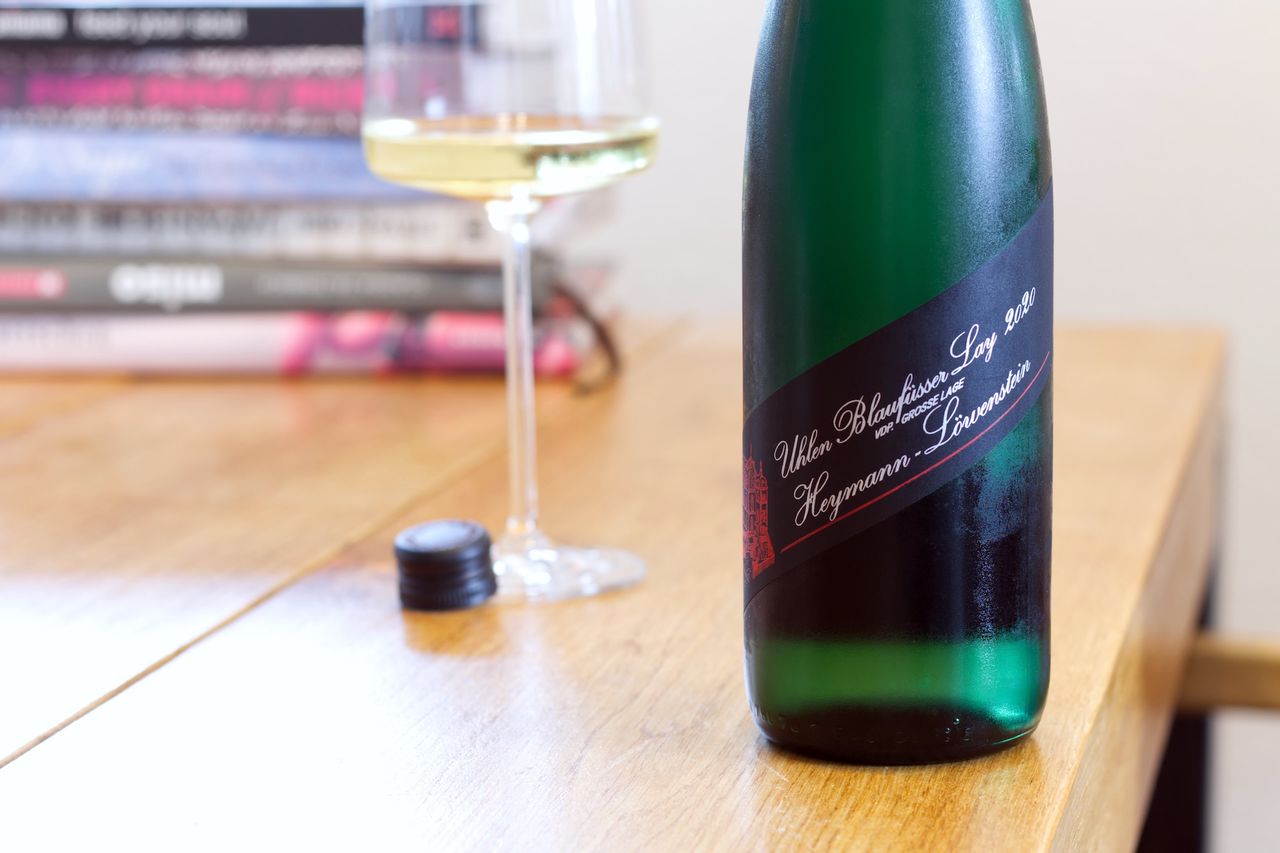Heymann-Löwenstein - Uhlen Blaufüsser Lay 2020
This week we are drinking a bottle of Riesling from the Terraces Mosel: from the Heymann-Löwenstein Estate, the Uhlen Blaufüsser Lay from 2020.

Right at the very beginning of my writing here, Heymann-Löwenstein actually appeared twice on the blog. And then somehow never again. But that’s not because I haven’t been drinking the wines anymore, it’s much more due to my own completely broken sense of time, which always whispers “we just had that” in my ear. Especially the Uhlen R we drank back then has kept coming back to us over the years and is still up for re-review here at some point, because up to now it has gotten better every time we’ve revisited it. I’m firmly convinced that the screw cap, under which all the winery’s wines are bottled, plays a significant role. It’s not sexy, but it’s reliable. But it’s not just the screw cap that connects this bottle back to Uhlen R, the vineyard does as well.
The terraces of the Uhlen, hence the name, lie on the Terrassenmosel between Winningen and Kobern, just before Koblenz. It’s one of the Mosel sections still left on the personal to-do list for a visit. At least in Esslingen, we can see right on our doorstep just how spectacularly steep terrace vineyards look. On the Mosel, however, the vines take root in various slate soils. The roughly 17 hectares of the Winninger Uhlen (there’s also the Koberner Uhlen further upstream) are themselves divided into various sub-parcels: Laubach, Blaufüsser Lay, and Roth Lay, each with a different composition of slate. The Blaufüsser Lay, more or less directly below the Moseltal Bridge, consists, as the name suggests, mainly of blue-grey slate soil and faces southwest, with slopes partly well beyond 100% incline, so well over 45°. The vines here grow on wire trellises running across the slope. Why that is so, and why they aren’t trained on traditional single stakes, is best explained, like so much else, on the winery’s website. Of course, a tremendous amount of manual labor still goes into the wine and the vineyard. The grapes, like all grapes from the estate, are spontaneously fermented and then matured for a year and a half on the lees in large, used oak barrels before the wine goes under the screw cap.
The first moments after removing it are genuinely a bit tricky. Not so much on the nose, the typically slatey Mosel reduction is great, but on the palate the Riesling seems slightly bitter and somehow unbalanced. Luckily, the Riesling wasn’t planned to be enjoyed with food anyway, pairing Riesling with food is often tricky, so it gets to chill in the fridge for the next few hours and reflect on its existence. During this time, it loses none of its reduction, but stone fruit, forest honey, and a scent of the sea join in. It’s spicy and very concentrated on the nose. The bitterness has nearly vanished, there’s drive from the acidity, structure, and on the finish the herbality of forest honey, which lingers on the tongue mixed with a bit of sweetness. I have no idea how completely fermented the wine actually is and whether the impression comes from extract and fruit or from a touch of residual sugar, but as we’ve established over the last few weeks, I’m not a dryness fetishist. It suits the wine excellently here as well. With every sip, the stone fruit from the nose makes its way more and more onto the palate.
Even on the second evening, it can’t completely shake off the bitter note. If you’re sensitive to that or simply don’t like it, this wine probably isn’t for you right now. I think it strikes a nice balance with the now more open aroma. There’s flint, honey, yellow fruit, and that dark, herbal spice I always associate with Heymann-Löwenstein. Every time I encounter these wines, whether at the home dinner table or at a tasting somewhere, they always have this rather dark minerality at the core of the collection. And this bottle has it now, too.
By the third evening, the bitterness has taken another small step back. Actually, I’m not even sure whether it hasn’t disappeared completely, and I’m just imagining the tiny remnant because of the first two days. Maybe the wine is currently in a somewhat awkward maturation phase and just needs a little more time. Maybe it’s simply part of the vintage and this wine’s character. In any case, I would recommend giving it plenty of air. For once, a second bottle even made it to me, so I can test this theory myself in a few years. Thanks to the screw cap, I’m pretty relaxed about that. The fruit is more exotic on this third evening, more pineapple than stone fruit, which is fantastic together with the herbal spice. For me, this evening is by far the best. It’s juicy, balanced, with depth, drive, and lots of freshness. I’m looking forward to the second bottle. Maybe in three years, depending on what patience will allow.
Related Posts
- Carl Loewen - Maximin Herrenberg 2018
- Two Bottles Riesling by Weiser-Künstler
- Two Bottles Martin Müllen